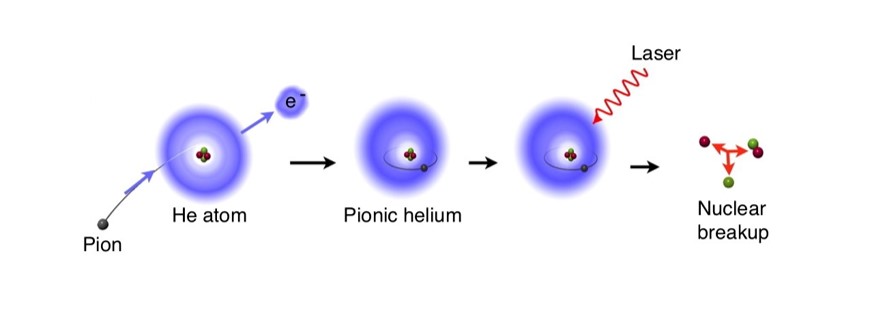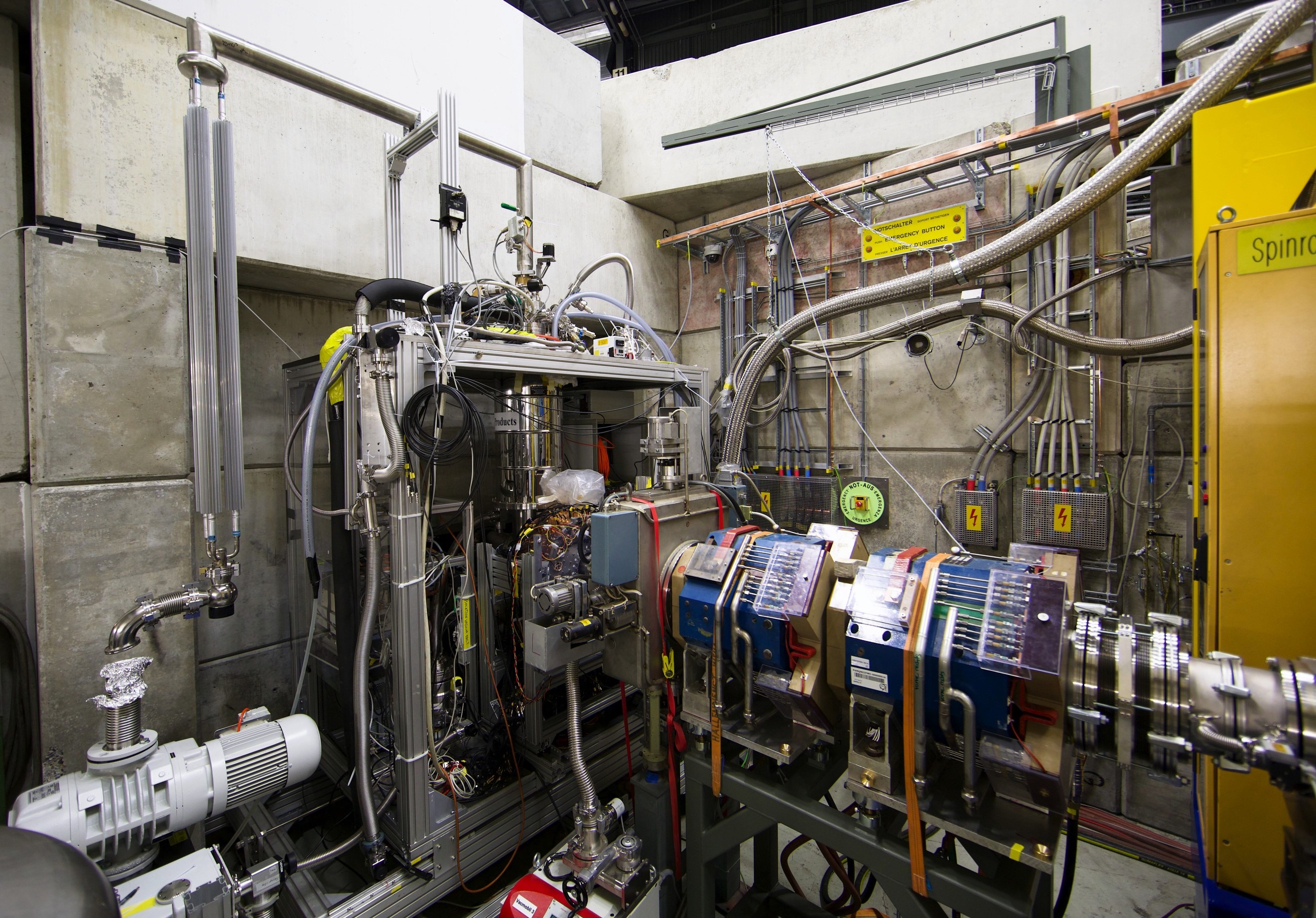A team of researchers from the ASACUSA collaboration have taken experimental equipment from CERN to the Paul Scherrer Institut (PSI) near Zurich to create a theoretically predicted but never before verified exotic atom and made first measurements of how it absorbs and resonates with light. The results, published today in the journal Nature, mark the first time such spectroscopic measurements have been made on an exotic atom containing a meson, a particle consisting of two fundamental particles called quarks. Among the authors there are two Hungarians, our colleague Dániel Barna, and Anna Sótér, colleague of the ETH Zürich.
Replace an electron in an atom with a heavy, negatively charged particle, and you get a so-called exotic atom. Such atoms usually have very short lifetimes, and they provide excellent tools for studying the properties of the replacement particle and to search for physics phenomena not predicted by the Standard Model.
“Spectroscopic measurements of exotic atoms containing mesons could be used to determine with high precision the mass and other properties of the constituent mesons, as well as to place limits on possible new forces involving mesons,” says ASACUSA co-spokesperson Masaki Hori. “For the meson used in this study, one of the lightest mesons, we might eventually be able to determine its mass with a precision of less than about one part in a hundred million. That would be 100 times more precise than has been achieved so far, and would allow a precise comparison with the Standard Model prediction to be made.”
The new atom verified by the experiment consists of a nucleus from an isotope of helium (helium-4), an electron and a negatively charged pion in a high-lying energy state. Its lifetime is more than a thousand times longer than any other atom containing a pion. To make such atoms, the team took negatively charged pions provided by PSI’s 590 MeV ring cyclotron facility – the world’s most intense source of such pions – and focused them using a magnet into a target containing superfluid helium (superfluids are fluids that flow without any resistance). Both the target and the magnet were made at CERN and brought to PSI for this study.
Next, to confirm that the atoms had indeed been created and to study how they absorb and resonate with light, the researchers fired laser light of various frequencies at the target and searched for instances in which the pions made a quantum jump between different energy levels of their host atoms.
After some trial and error playing with different laser frequencies, the researchers were able to identify a specific jump. This jump was predicted to result in the absorption of the pion by the helium nucleus and the subsequent breaking of the latter into a proton, a neutron and a composite particle made up of a proton and a neutron. The researchers detected these fragments using an array of particle detectors that was also made at CERN and brought to PSI, thereby confirming that the pions had indeed made the jump.
Next on the researchers’ agenda is to improve the precision with which the jump was identified and to search for other jumps, with the view to using them to measure the mass of the pions and test the Standard Model.

Caption: Creation of a pionic helium atom: a pion replaces one of the two electrons in a normal helium atom to form pionic helium. A resonant laser then induces a quantum jump of the pion from one orbit of the pionic helium atom to another. This leads to nuclear break-up which permits direct detection of the pionic helium atom. (Image: CERN)

Caption: Experimental apparatus used to synthesise pionic helium atoms at the Paul Scherrer Institute. (photo: CERN)
Source: CERN



